
Solar energy is the fastest-growing energy source in the United States, and it’s easy to see why. In 2024, the U.S. installed more solar power than all other forms of energy combined. Solar, paired with battery storage, made up a huge 81.5% of new electricity generation.
What’s driving this shift? Homeowners and business owners across the country are choosing to take control of their energy. With a 30% federal tax credit still in place (set to gradually step down after 2032) and strong state incentives available in Pennsylvania and New Jersey, there’s never been a better time to consider solar.
While the initial cost of a solar system can range from $20,000 to $60,000 for a typical homeowner, and more for businesses, there are many incentives and financing options that make going solar easier and more affordable than ever.
This comprehensive guide is designed for anyone interested in investing in behind-the-meter solar. Whether you’re a homeowner or business owner, you’ll walk away with a clear understanding of solar system pricing, how it can provide a return on investment, and why it makes sense for both the environment and your bottom line.
Table of Contents
What is Behind-the-Meter Solar?
When you invest in a solar energy system (also called a photovoltaic or PV system) that supplies power to your property first and sends any extra to the public utility grid, you’re using what’s known as “behind-the-meter solar.” In this setup, the energy you generate is primarily used on-site, reducing your reliance on the grid. Any excess electricity can then be “sold” back to the utility company through net metering and SREC (Solar Renewable Energy Credit) programs.
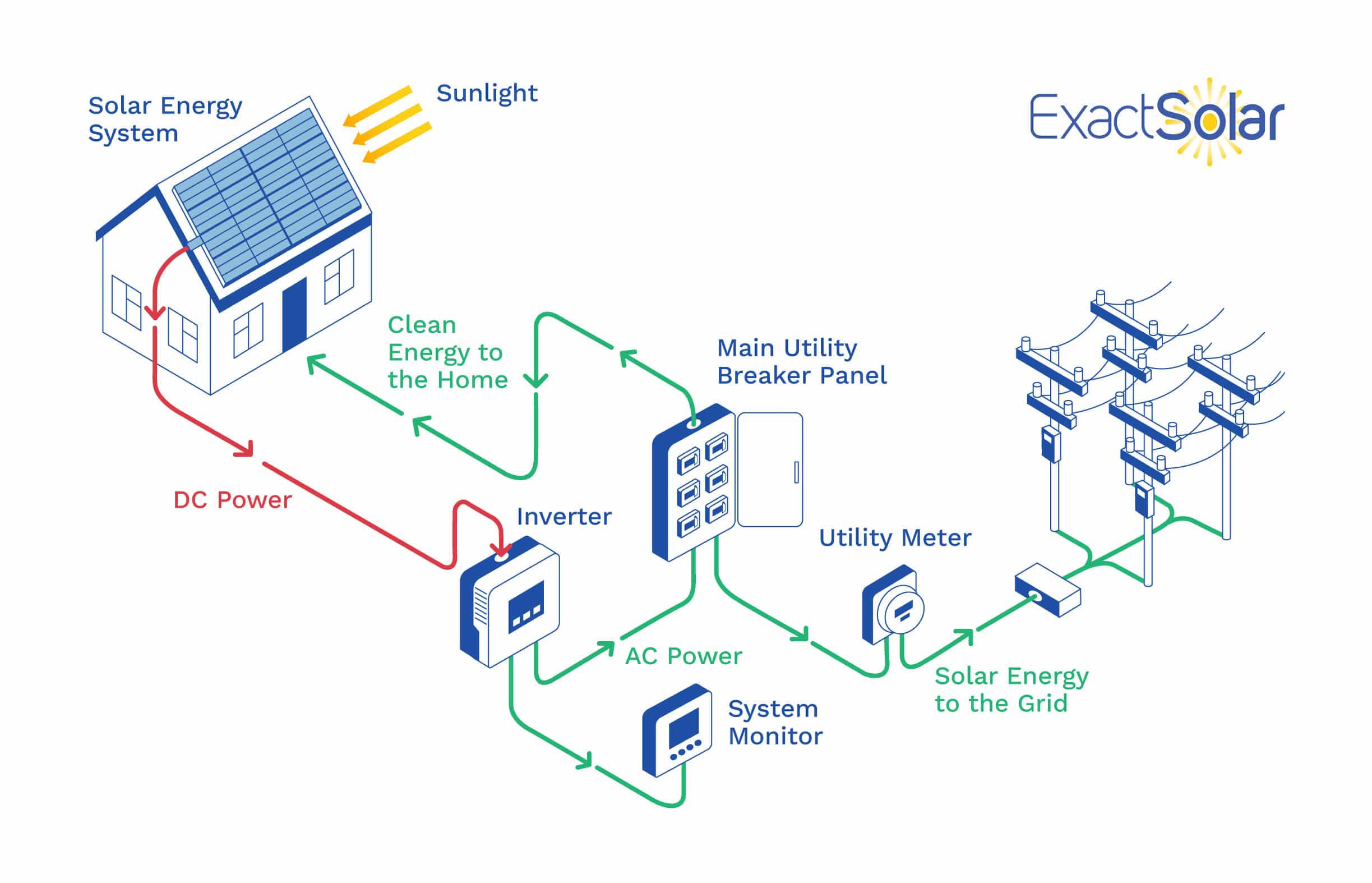
When you’re ready to invest in solar energy and receive a pricing proposal from your installer, you’ll likely see a number labeled “price-per-watt” (PPW). Understanding this figure and how it’s calculated is important to ensure you’re getting the best value for a high-quality solar energy system.
Understanding Price-Per-Watt (PPW) in Solar System Costs
Price-per-watt (PPW) is a metric commonly used in the solar industry to measure the cost of a system in relation to its energy-producing capacity. It’s calculated by dividing the total installed cost of a solar system by its total capacity in watts (W) or kilowatts (kW).
The total capacity in watts refers to the maximum power a solar system can generate under ideal conditions. For example, if a homeowner installs a 10-kilowatt (kW) solar system (which equals 10,000 watts) at a total cost of $30,000, the PPW would be calculated as follows:
PPW = $30,000 / 10,000W = $3.00 per watt
This means the system costs $3.00 per watt of installed capacity.
On average, modern solar systems cost about $2.63 per watt in both Pennsylvania and New Jersey. Commercial systems, which are often larger and benefit from bulk pricing, generally range from $1.50 to $2.30 per watt.
Several factors can influence PPW, including panel efficiency, inverter technology, installation complexity, labor costs, permitting fees, and state incentives.
Fortunately, in Pennsylvania and New Jersey, state-level incentives can help lower the PPW and make solar more affordable. We’ll cover those in more depth below.
Breaking Down Solar System Costs
Solar energy systems are made up of much more than solar panels. While the panels are responsible for converting sunlight into direct current (DC) electricity, homes and businesses run on alternating current (AC). That’s where inverters come in. They convert the electricity into a form that can be used safely on-site.
To keep the system safe and connected to the grid, other equipment is needed as well. For example, anti-islanding technology ensures that your system automatically shuts down during a power outage. This prevents it from sending electricity back to the grid while utility crews may be working on power lines.
There are several other important components involved in a well-designed system, which we’ll go into more detail on below.
When pricing solar energy systems, there are “hard costs” (hardware like solar panels, inverters, combiner boxes, emergency shutoff switches, etc.) and “soft costs” (labor, commission, permitting, and other related services).
Hardware Components In a Solar Energy System
Solar Panels (Modules)
Solar panels, also known as solar modules, take sunlight and turn it into DC electricity. Solar panels themselves account for roughly 12–20% of the total system cost, depending on the brand, manufacturing quality, and efficiency.
There is no set cost for solar panels since, just like with any other product, there are several different types and brands with varying reputations and qualities.
We’ve outlined the most common types below.
Monocrystalline Solar Panels

Monocrystalline solar panels are the most modern, efficient, and widely used type. Typical efficiencies range from 18% to 22% (meaning the percentage of sunlight they convert into electricity). They are known for their sleek black appearance, making them the go-to choice for aesthetically-minded home and business owners.
These panels have a long lifespan (usually over 25 years) and perform well in both high and low light conditions, making them ideal for maximizing energy production in limited space. Monocrystalline panels can cost anywhere from $100-$600 each, depending on the brand, quality, and wattage.
Polycrystalline Solar Panels
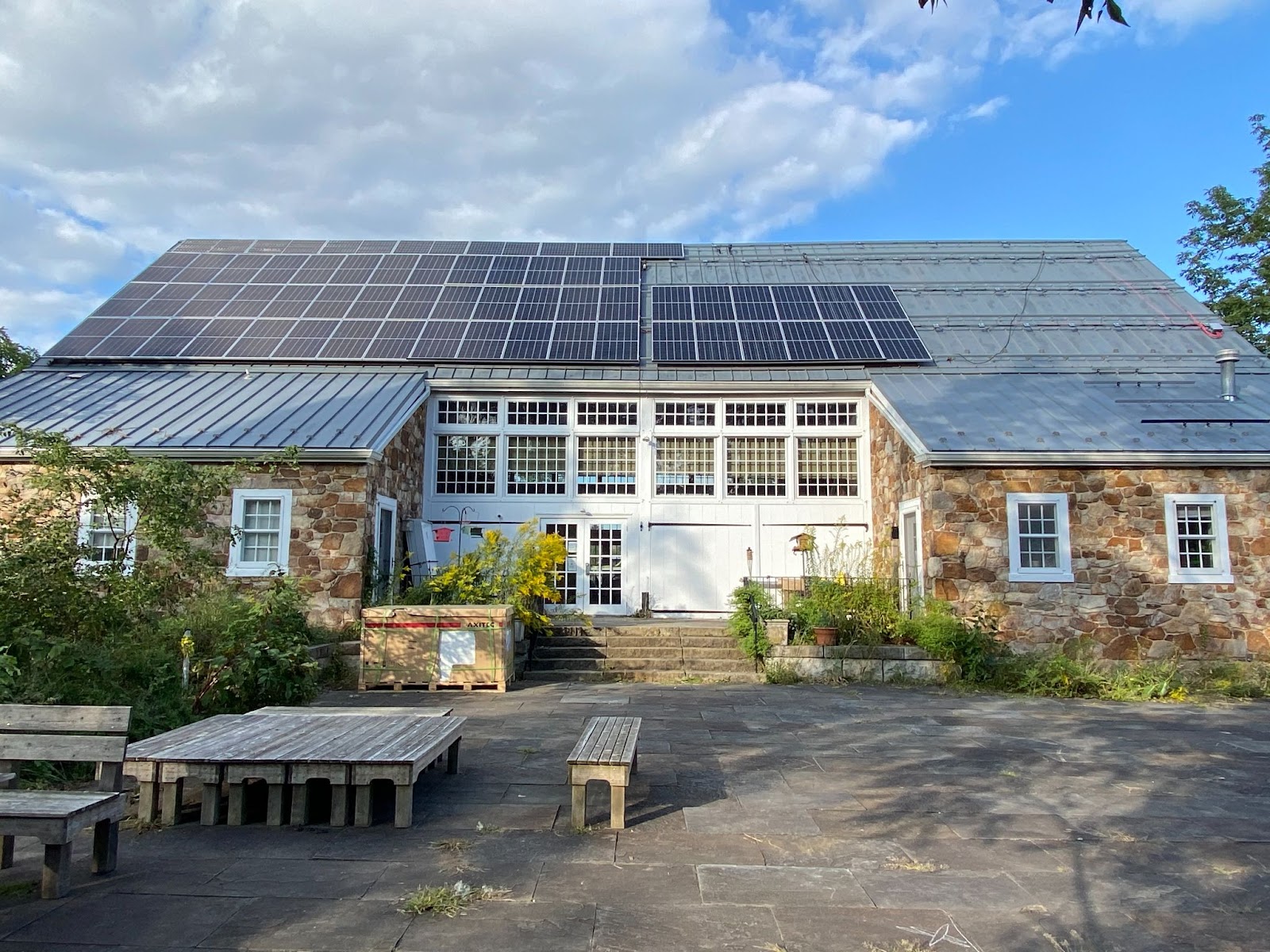
Polycrystalline solar panels were the dominant type of panel on the market until the early 2000s, but aren’t widely used anymore. They’re cheaper to manufacture than monocrystalline panels since the silicon wafers that make them up can be less pure and are melted together rather than precision-cut.
They’re less efficient than Monocrystalline panels, only 15%-17%. They have a distinctive blue, speckled appearance due to the way silicon crystals are melted together during manufacturing.
Bifacial Solar Panels
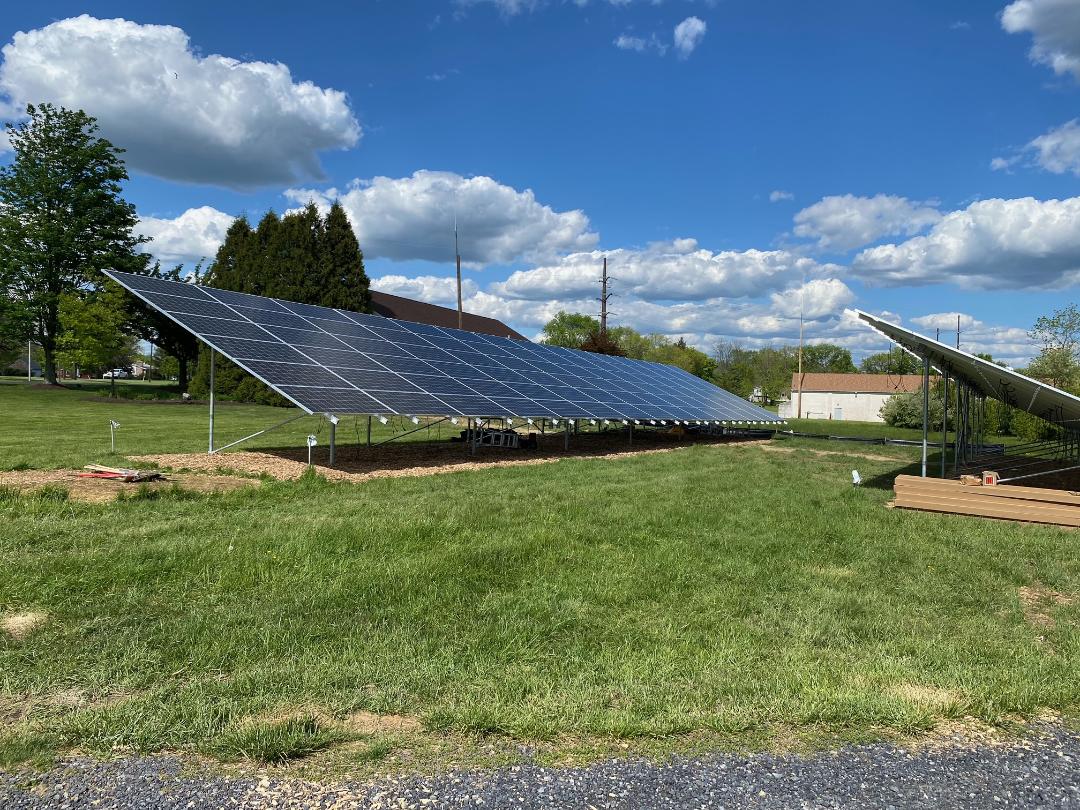
Bifacial solar panels have solar wafers mounted on both the front and back sides. This feature makes them especially beneficial for flat commercial rooftops or ground-mounted systems where the panels are mounted at an angle, exposing the back of the panels to reflected light.
Even though bifacial panels are slightly more expensive, they’re the most cost-effective panels we use at Exact Solar since they offer higher energy yields in the same environments. They tend to cost slightly more, but they pay for themselves faster since they output 5-30% more energy.
On regular shingled roofs, we generally do not use bifacial panels since the panels are mounted very close to the roof (4-5 inches away) and, therefore, almost no reflected light gets behind them.
Thin-Film Solar Panels
Thin-film solar panels are lightweight, flexible, and easy to install. They’re best used in mobile off-grid applications like vans and RVs, where weight and flexibility are critically important. They are manufactured using materials like cadmium telluride or amorphous silicon, and tend to be as or more expensive than crystalline panels since they have a very specialized use.
They typically offer lower efficiency (around 10% to 12%) than crystalline panels. Since they are designed for mobile applications, wear and tear on them tends to be higher, and they don’t last as long (not into the multi-decade range like crystalline panels do).
Exact Solar only installs solar energy systems on homes and businesses; we don’t use thin-film panels.
Inverters
The inverter is the “brain” of a solar energy system, converting the DC output from solar panels into the AC power used by homes and businesses. Most modern inverters track power generation as they convert it and send those stats to an app or monitoring portal.
Inverters represent about 5–20% of the total cost of the system, depending on the type of inverters used and the size of the system.
There are three main types:
String Inverters
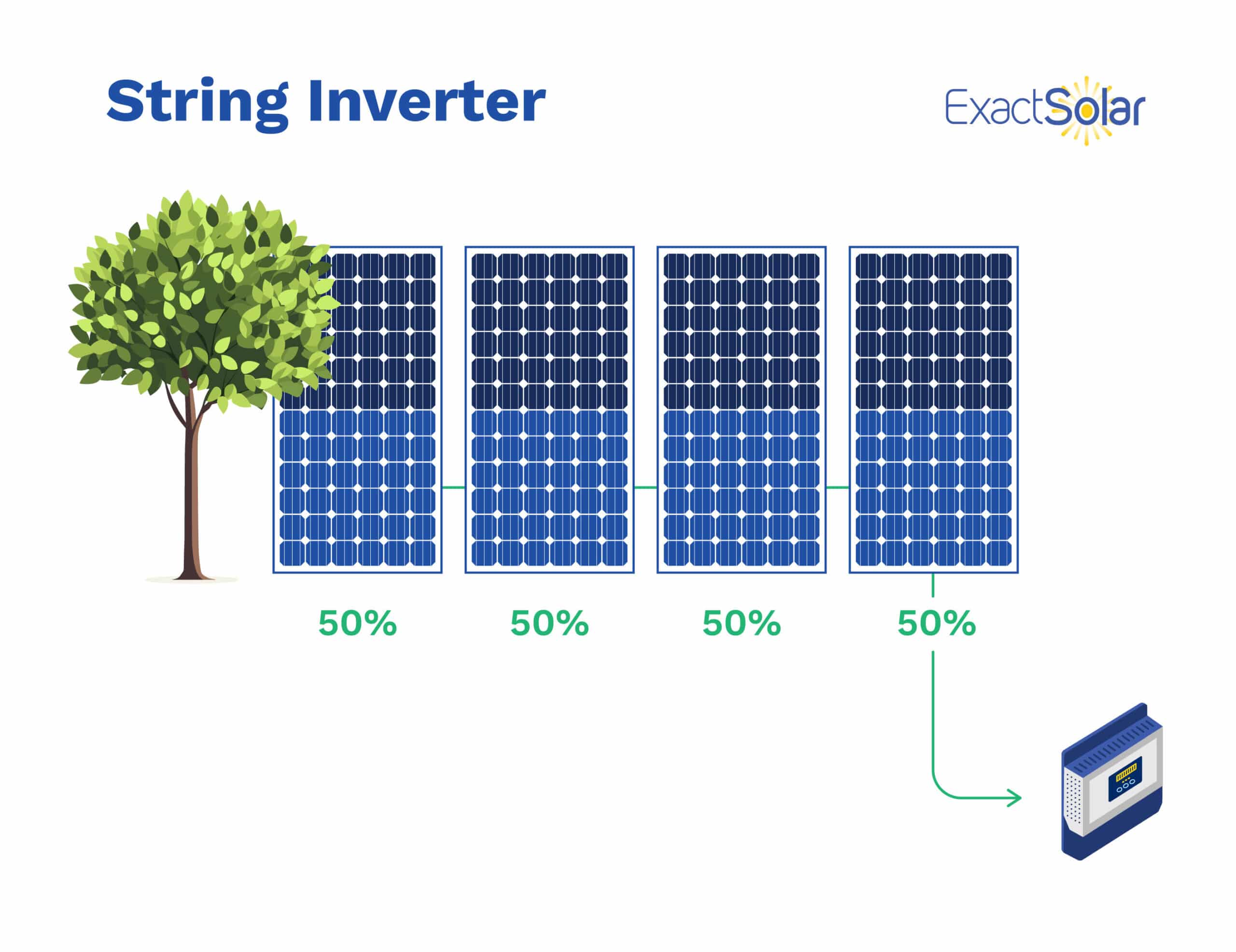
String inverters are the most cost-effective inverter option. They’re generally used in commercial and residential systems with unshaded, uniformly oriented panels. In this setup, panels are connected in a series (or “string”), and the electricity generated by those panels flows through a single inverter (typically mounted near the electrical panel).
This design works efficiently as long as every panel in the string receives uniform sunlight. However, performance can suffer if even one panel is shaded, since the entire string’s output then drops to the level of the lowest producing panel.
Imagine a string of old-fashioned Christmas lights. If one bulb went out, every bulb in the series past that bulb was affected. The same is true for solar panels wired in series (though many companies are working on solutions to this problem).
Microinverters
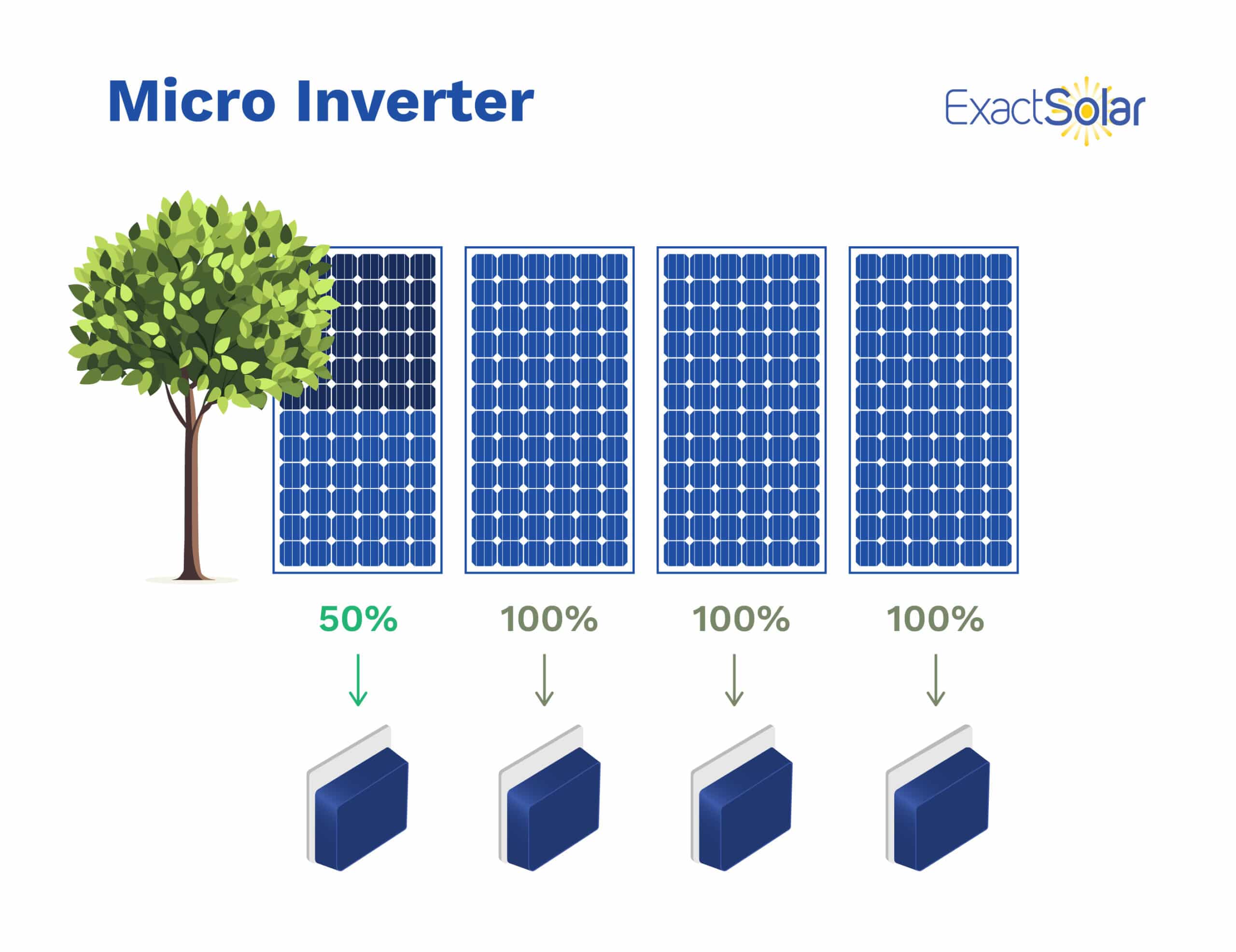
Microinverters operate at the per-panel level, with a smaller inverter placed directly beneath each solar panel rather than a larger inverter sitting at the end of a string. This allows every panel to operate independently, significantly improving energy production in systems with partial shading.
Although microinverters are more expensive, they offer greater flexibility and enhanced monitoring capabilities. Rather than tracking the output of an entire system like a string inverter does, microinverters track the output of each panel, making it a lot easier to diagnose which panel has failed if the system starts reporting dramatically reduced power.
This setup is ideal for rooftops with chimneys, trees, or other features that may cast intermittent shadows.
Power Optimizers
Power optimizers are a hybrid solution that combines elements of both string inverters and microinverters. Installed at each panel like microinverters, they “optimize” the DC power before sending it to a central string inverter.
This improves system performance and reduces shading-related losses while maintaining a lower price than microinverter systems. Power optimizers are well-suited for homeowners who want better performance and panel-level monitoring without the full cost of microinverters.
Mounting & Racking
Mounting and racking systems physically support and secure solar panels to whatever surface they’re mounted on. Racking typically accounts for 5–15% of the total installation cost, and the final price depends heavily on your roof type, system design, and whether the system is rooftop or ground-mounted.
Rooftop Racking
For most residential installations, rooftop racking is the most common and cost-effective option. The mounting system attaches directly to the roof, with flashing and sealing materials to prevent leaks.
The specific racking hardware used will vary depending on the roof material—shingle roofs use lag bolts and flashing, while standing seam metal roofs often allow for clamp-based systems that avoid roof penetrations altogether.
Flat roofs typically require ballasted mounting systems, which use weighted trays to hold panels in place without drilling into the surface. These ballasted systems may increase material and engineering costs due to added weight and wind-load considerations.
Ground-Mounted Systems
Ground mounts are used when rooftop space is insufficient, like in large utility-scale solar energy systems. These systems use steel or aluminum frames anchored into the ground, usually driven piers, helical screws, or concrete footings.
While ground mounts allow for greater design flexibility and easier maintenance access, they come with higher labor and material costs due to site preparation, trenching for wiring, and structural support.
Adjustable & Tracking Mounts
Some systems incorporate adjustable tilt racks or motorized tracking systems that follow the sun throughout the day. While dual-axis trackers can increase energy production by 25–35%, they significantly raise installation and maintenance costs and are typically only used in large-scale commercial or utility-scale installations.
Balance-of-System (BOS) and Soft Costs
The balance-of-system (BOS) includes all the additional components and services required for building a fully operational solar installation. Together, BOS and soft costs often make up 400–60% of the total system’s cost. These include:
Electrical Components
Depending on the project, this can include wiring, conduit, switches, fuses, and disconnects.
Labor Costs
These include hourly labor rates for installers, permits, inspections, and interconnection fees.
Miscellaneous Soft Costs
These are operating fees for the solar business, such as design, project management, financing fees, overhead, and commission.
Factors Determining Solar System Costs
While the above breakdown of component costs gives you a general idea of where your investment goes, many factors influence the final price.
These include the size of your system, your geographic location, the type of installation, and the specific equipment you choose.
System Size and Energy Consumption
Behind-the-meter solar energy systems are sized to match or exceed the energy consumption of the property they’re on. The total cost is proportional to the system size (measured in kilowatts, kW).
A larger system will have a higher upfront cost since more components are involved. However, it will likely deliver greater long-term savings since the energy costs of that property are higher and will, therefore, benefit more from reduced energy costs.
Location and Sunlight Exposure
The geographic location of your property influences solar production. The amount of sunlight your region receives in a year is a critical factor in determining how soon your system will pay for itself.
Regions with frequent overcast skies, heavy snow, or shading from trees will need more expensive solar energy systems, since the number of components necessary to match energy needs will be greater. These systems will take slightly longer to pay for themselves as well.
Equipment Choices and Efficiency
Not all solar panels and inverters are created equal. Higher-efficiency panels produce more energy per square foot, reducing the number needed. Although these panels may have a higher per-watt cost, using them means a more compact installation that outputs more power than necessary.
Choosing microinverters or power optimizers rather than string inverters may increase upfront costs but can mean higher energy output, particularly in shaded environments.
Solar Costs in Pennsylvania and New Jersey
For many solar adopters, state-specific details are as important as national trends. In Pennsylvania and New Jersey, local policies and incentives significantly influence the total cost of solar installations.
Pennsylvania Solar Costs & Incentives
Average Costs: $2.63 per watt for residential systems. A 5–15 kW system might cost roughly $20,000-$60,000 before incentives.
Pennsylvania Incentives Include:
Solar Renewable Energy Credits (SRECs)
Homeowners can earn one SREC for every 1 MWh of electricity generated. They’re worth $30–$40 per SREC, and offer a revenue stream the solar energy system’s owner can enjoy for the entire life of the system.
Net Metering
Pennsylvania offers 1-1 net metering. Excess electricity is credited at the full retail rate, and any annual surplus may even be paid out as a check.
Federal Tax Credit (ITC)
Anyone who installs a solar energy system in the U.S. can claim a 30% federal tax credit on their total system costs, further reducing the cost of their solar installation.
New Jersey Solar Costs & Incentives
Average Costs: $2.63 per watt for residential systems. Like in PA, a 5–15 kW system might cost roughly $20,000-$60,000 before incentives.
New Jersey Incentives Include:
Successor Solar Incentive (SuSI) Program
Replacing the older SREC program, SuSI provides fixed payments for solar energy generation. $85 per SREC-II certificate (for every 1 MWh produced) over 15 years.
Sales Tax Exemption
New Jersey exempts solar equipment from state sales tax (6.625%), effectively reducing upfront costs by this percentage.
Property Tax Exemption
The value added to a home by a solar installation is excluded from property tax assessments, preventing future tax increases from any added home value a solar energy system brings.
Net Metering
Like Pennsylvania, New Jersey offers full retail credit for net metering up to 100% of usage. Surplus generation beyond annual consumption is credited at a lower, wholesale rate.
Commercial Solar Costs
Commercial solar installations offer even larger tax benefits than residential systems, with bonus credits that can be added to the 30% federal tax credit.
For businesses, solar is not only an energy source but also a significant investment strategy that offers attractive tax benefits and a hedge against rising utility costs.
Average Price Per Watt: Commercial systems, which can take advantage of bulk pricing, typically cost between $1.50 to $2.50 per watt.
Commercial building owners who invest in solar energy systems can take advantage of several incentives, including:
Federal Investment Tax Credit (ITC)
The 30% tax credit is available for commercial systems as well, with a caveat. The project owner must meet local prevailing wage requirements if the project is over 1 MW. Most commercial projects are on a much smaller scale than that, so this doesn’t apply in most cases.
Exact Solar builds solar energy systems of all sizes, and we’re accustomed to walking companies through this process.
Bonus Tax Credits
Three bonus incentives were created by the IRA that directly lower the cost of commercial-scale solar projects. These are context-dependent and cannot be claimed by everyone, but do make certain projects far more enticing. They are:
MACRS Depreciation
Businesses can recover 50–60% of the project cost in tax benefits by utilizing accelerated depreciation.
Why 2025 is the Best Year to Invest in Solar
Historically Low Costs
Solar panel prices have dropped dramatically in the last decade, by up to 70% for residential systems and even more for larger installations. Technological improvements have driven down the cost per watt to levels that were unimaginable a decade ago.
Federal Incentives
The 30% federal tax credit (Residential Clean Energy Credit for homeowners and the Investment Tax Credit for businesses) is currently one of the most generous incentives available. This credit, scheduled to last through 2032 and step down after, means that a significant portion of your installation cost is offset immediately.
Rising Electricity Prices
Utility rates in both Pennsylvania and New Jersey are set to increase by at least 20% in the next two years. These rate hikes make going solar even more enticing since solar energy systems now pay for themselves even faster as they’re offsetting higher rates.
Improved Technology and Reliability
Modern solar panels are more efficient and durable than ever before. With warranties of 25 years or more and minimal maintenance needs, solar panels have become a reliable, long-term investment that saves money and adds value to your property.
Frequently Asked Questions (FAQs)
Do roof size and house size affect the cost of a solar installation?
The primary factor is your energy consumption, not the physical size of your home. Roof size matters only to the extent that it determines how many panels can be installed. A small house with high energy usage may require a larger system and more roof space than a larger home with lower consumption.
How does the federal 30% tax credit work?
The federal tax credit allows homeowners and businesses to deduct 30% of the solar installation cost from their federal taxes. For example, a $20,000 installation can reduce the tax bill by $6,000. This credit applies to both residential and commercial systems.
How quickly can I expect a return on my solar investment?
The payback period typically ranges from 5 to 9 years for residential systems and around 7 years for commercial systems, depending on energy consumption, local rates, and available incentives. Over 25-30 years, the savings and earned income through credits can exceed the initial investment multiple times.
Are there any additional maintenance or hidden costs?
Solar energy systems are very low-maintenance. They require periodic cleaning to make sure they’re performing at their best, but if you live in an area with frequent rain or snowfall, this is taken care of automatically.
Ready to Take the Next Step?
With solar panel costs dramatically reduced over the past decade, robust federal and state incentives supporting those who go solar, and energy costs rapidly rising, solar energy systems have never been a more attractive investment.
Whether you want to go solar for environmental reasons, use solar battery backup to keep the lights on during natural disasters, or make an investment that will pay dividends for decades, you have a compelling reason.
We’d love to meet with you for a free consultation and show you what going solar could look like for your unique home.
